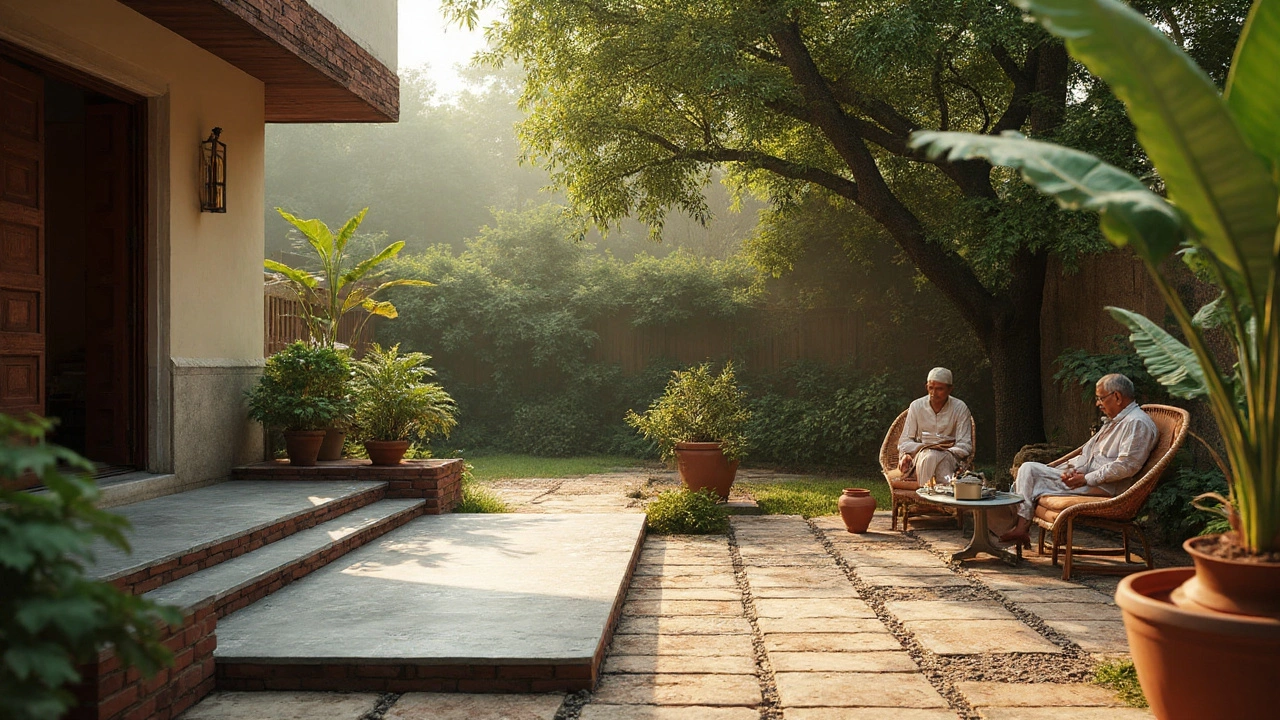Yes-a terrace can be at ground level. Learn how it differs from a patio, UK rules, design steps, drainage, costs, and smart build tips for small gardens.
Drainage Slope: Why It Matters for Indian Gardens and Farms
When you think about healthy plants, you probably picture sunlight, water, and rich soil. But one thing most gardeners overlook is drainage slope, the gentle angle of land that lets excess water flow away from plant roots. Also known as grade, it’s not just for big farms—it’s the quiet hero behind every thriving balcony garden or backyard vegetable patch in India. Without it, water sits. And when water sits, roots drown. In places like Kerala or West Bengal, where monsoons dump hundreds of millimeters of rain, a flat garden isn’t just inconvenient—it’s deadly for plants.
Drainage slope works with nature, not against it. A slope as small as 1%—about 1 inch drop for every 8 feet of distance—is enough to move water away from plant bases. Too little, and you get waterlogging, a condition where soil stays saturated, starving roots of oxygen. Too much, and you wash away your topsoil and nutrients. The sweet spot? Just enough to let water flow, not flood. This isn’t guesswork. Farmers in Punjab who adjusted their field slopes by just 2 degrees saw 40% fewer crop losses during heavy rains. In urban balconies, a tilted planter box with a 1-inch drop from back to front stops root rot before it starts. You don’t need a surveyor. A level and a ruler are enough.
Drainage slope connects directly to other things you care about. It affects how well soil drainage, the speed at which water moves through soil works. Even the best compost won’t help if water pools around your tomato roots. It shapes how you use garden drainage, systems like French drains, raised beds, or sloped containers that guide water away. And it’s why some plants—like hydrangeas or zinnias—die in spots others thrive. They’re not picky. They’re just drowning.
You’ll find posts here that show you how to fix poor drainage on balconies, how to slope containers so your basil doesn’t rot, and why clay soil needs more slope than sandy soil. You’ll learn how to spot waterlogging before your plants turn yellow, and how to use simple tools—like a garden hose or a level—to test your land’s natural slope. This isn’t theory. It’s what works for farmers in Tamil Nadu, gardeners in Delhi, and balcony growers in Mumbai. Fix the slope, and you fix half the problem. The rest? That’s just plant care.
